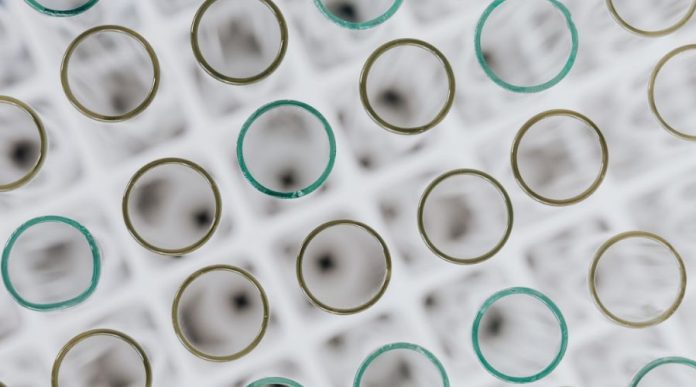Speed and precision are essential factors in cancer diagnosis and treatment.
Melanoma patients benefit from many therapeutic options, but too much choice isn’t always a good thing. This means selecting the best course from a variety of therapies can be slow and difficult.
Lucky for us, new medical tech in the form of microneedles may be about to change this.
Multifunctional Microneedles
In an article in Advanced Functional Materials researchers at the Wyss Institute at Harvard University, MIT, and Brigham and Women’s Hospital in Boston, describe tiny microneedles that can simultaneously deliver drugs and detect biomarkers to evaluate the effectiveness of melanoma therapy.1
In a press release David Walt, Hansjörg Wyss Professor of Biologically Inspired Engineering at Harvard Medical School explains, “The Artzi lab’s remarkable microneedle technology containing engineered nanostructures, in principle, enables both, drug delivery and micro-sampling – a completely new concept for a theranostic, which provides an ideal, non-invasive and comprehensive solution to melanoma treatment.”2
Barely Visible to the Naked Eye
The accuracy with which these minuscule needles can target very small, very specific areas is a huge advantage when it comes to delivering powerful anti-cancer medications.
This means high doses of a drug can be delivered directly to the tumour without harming healthy cells in the rest of the body.1 Because these needles are so small, at less than a millimeter long, the chances are you wouldn’t even know you’d been pricked.1
A cross-disciplinary team of researchers led by Natalie Artzi, Ph.D., Associate Professor of Medicine at Harvard Medical School (HMS) and a Principal Research Scientist at the Institute for Medical Engineering and Science at MIT, used microneedles with ultrasound and a drug that activated the immune system to test whether they could reliably measure the effect on cancer cells.1
Immediate Read Out
Artizi’s team developed tiny needle-like structures approximately two thirds of a millimetre long and one tenth of a millimetre wide from hyaluronic acid – a naturally occurring polymer found throughout the body as a structural component of tissue.3
After delivering therapy, the microneedles suck up a tiny amount of fluid surrounding the skin cells (interstitial skin fluid). “After the microneedles are retrieved, their tips can be simply dissolved to release the captured molecules into a test tube for us to start the biomarker analysis,” Daniel Dahis, the first author of the study, explained to Benjamin Boettner.2
Such tiny amounts of fluid, however, require advanced testing methods to identify and measure changes in biomarkers.
To solve this problem, Artzi parthered with David Walt, Ph.D., to use his cutting-edge single molecule immunodetection assay. This test is exquisitely responsive, up to 100 times more sensitive than traditional assays.4
With the ability to capture and record a single molecule of a known biomarker, this test was able to take microlitres of interstitial skin fluid, and deliver a comprehensive profile of biomarkers associated with successful immunotherapy.1
A Beautiful Collaboration
As Wyss Founding Director Donald Ingber, M.D., Ph.D., said, “This work is a beautiful example of interdisciplinary collaboration and convergence of cutting-edge technologies that we strive for at the Wyss Institute. This new advance has the potential to raise the quality of cancer immunotherapy to the next level by directly assessing therapeutic efficacy in individual patients.”2
Although these results are promising, the technology is still in early stages. We look forward to updating you as research continues.
It is always recommended to consult with a healthcare professional for personalized advice and guidance regarding melanoma diagnosis, monitoring and treatment.
References
- Dahis, D.,et al. Monitoring Melanoma Responses to STING Agonism and Focused Ultrasound Thermal Ablation Using Microneedles and Ultrasensitive Single Molecule Arrays. Adv. Funct. Mater. 2023, 2301659.
- Moving the needle on monitoring skin cancer. Wyss Institute. Published August 21, 2023. Accessed September 10, 2023. https://wyss.harvard.edu/news/moving-the-needle-on-monitoring-skin-cancer/.
- Dosta, P., Puigmal, N., Cryer, A.M., Rodríguez, A.L., Scott, E., Weissleder, R., Miller, M.A., Artzi, N. Polymeric microneedles enable simultaneous delivery of cancer immunomodulatory drugs and detection of skin biomarkers. Theranostics. 2023 13(1), 1-15 doi:10.7150/thno.73966
- Schubert, S., et al. Ultra-sensitive protein detection via Single Molecule Arrays towards early stage cancer monitoring. Sci Rep. 2015 5, 11034



